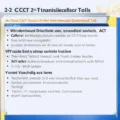In our fast-paced, often chaotic world, finding moments of calm and connection can feel challenging. That’s where grounding techniques come in. These simple yet powerful practices help bring us back to the present moment, soothing anxiety and promoting a sense of inner peace. In this article, we’ll explore 26 expert-recommended grounding tools and techniques to support your mental health and overall wellbeing.
Understanding Grounding and Its Benefits
Grounding, also known as earthing, is the practice of reconnecting with the present moment and your immediate surroundings. It can be especially helpful during times of stress, anxiety, or when feeling overwhelmed. The benefits of regular grounding practice include:
- Reduced anxiety and stress
- Improved focus and clarity
- Enhanced emotional regulation
- Better sleep quality
- Increased sense of calm and wellbeing
Physical Grounding Techniques
These techniques focus on using your body and senses to anchor yourself in the present moment:
- 5-4-3-2-1 Method: Name 5 things you can see, 4 things you can touch, 3 things you can hear, 2 things you can smell, and 1 thing you can taste.
- Deep Breathing: Take slow, deep breaths, focusing on the sensation of air entering and leaving your body.
- Progressive Muscle Relaxation: Systematically tense and relax different muscle groups in your body.
- Barefoot Walking: Walk barefoot on grass, sand, or soil to connect with the earth’s energy.
- Cold Water Immersion: Splash cold water on your face or take a cool shower to reset your nervous system.
- Body Scan: Slowly focus your attention on each part of your body, noticing sensations without judgment.
Mindfulness and Meditation Grounding Techniques
These practices help cultivate present-moment awareness and inner calm:
- Mindful Observation: Choose an object and observe it in detail for several minutes.
- Loving-Kindness Meditation: Send thoughts of love and compassion to yourself and others.
- Breath Counting: Count your breaths from 1 to 10, then start over.
- Body Awareness Meditation: Focus on the sensations in your body, starting from your toes and moving upward.
- Mantra Repetition: Silently repeat a calming phrase or word.
- Guided Imagery: Visualize a peaceful, safe place in your mind.
Creative and Expressive Grounding Techniques
Engage your creative side to promote grounding and emotional release:
- Journaling: Write down your thoughts and feelings without censorship.
- Art Therapy: Express yourself through drawing, painting, or sculpting.
- Music Therapy: Listen to or create calming music.
- Dance or Movement: Express emotions through free-form movement or dance.
- Gardening: Connect with nature by planting or tending to plants.
- Cooking: Focus on the sensory experience of preparing a meal.
Cognitive Grounding Techniques
Use your mind to anchor yourself in the present and challenge anxious thoughts:
- Fact-Checking: Challenge anxious thoughts by examining the evidence for and against them.
- Alphabetical Grounding: Name items in a category (e.g., animals, cities) for each letter of the alphabet.
- Math Problems: Solve simple math problems in your head.
- Present Moment Description: Describe your current surroundings in detail, as if to someone who can’t see them.
- Positive Affirmations: Repeat empowering statements to yourself.
- Grounding Statement: Create a personal statement that reminds you of your safety and presence in the moment.
Social and Relational Grounding Techniques
Connect with others to feel grounded and supported:
- Reach Out: Call or text a supportive friend or family member.
- Pet Therapy: Spend time petting or cuddling with an animal.
Remember, different techniques may work better for different people or situations. Experiment with these grounding tools to find what resonates most with you. With practice, you’ll develop a personalized toolkit for cultivating inner peace and wellbeing, no matter what life throws your way.
Frequently Asked Questions
1. How often should I practice grounding techniques?
There’s no fixed rule, but incorporating grounding practices into your daily routine can be highly beneficial. Even just 5-10 minutes a day can make a significant difference. Additionally, use these techniques whenever you feel anxious, overwhelmed, or disconnected.
2. Can grounding techniques replace professional mental health treatment?
While grounding techniques are valuable tools for managing stress and anxiety, they are not a substitute for professional mental health treatment. If you’re struggling with persistent mental health issues, it’s important to seek help from a qualified therapist or counselor.
3. Are there any grounding techniques that are particularly effective for panic attacks?
Many people find the 5-4-3-2-1 method, deep breathing, and cold water immersion particularly helpful during panic attacks. These techniques can help redirect your focus and activate your body’s relaxation response. However, everyone is different, so it’s important to find what works best for you.
4. Can children use grounding techniques?
Absolutely! Many grounding techniques can be adapted for children. Simple practices like deep breathing, mindful coloring, or using a stress ball can be great for kids. It’s important to teach these skills in a way that’s age-appropriate and engaging.
5. How long does it take to feel the effects of grounding techniques?
The effects of grounding techniques can often be felt immediately, but their impact tends to deepen with regular practice. Some people notice significant improvements in their overall wellbeing within a few weeks of consistent use. Remember, patience and persistence are key when developing any new habit.









